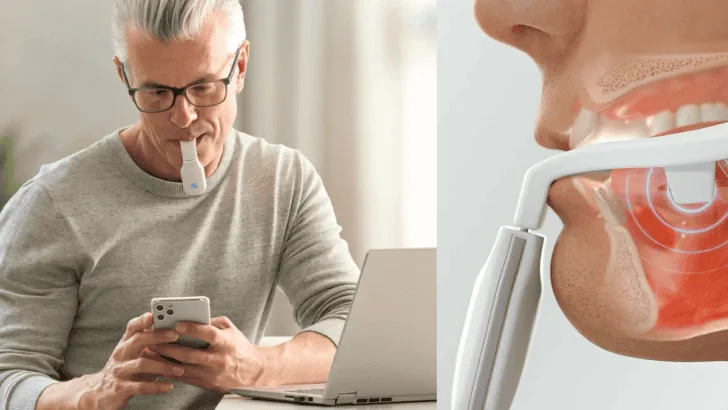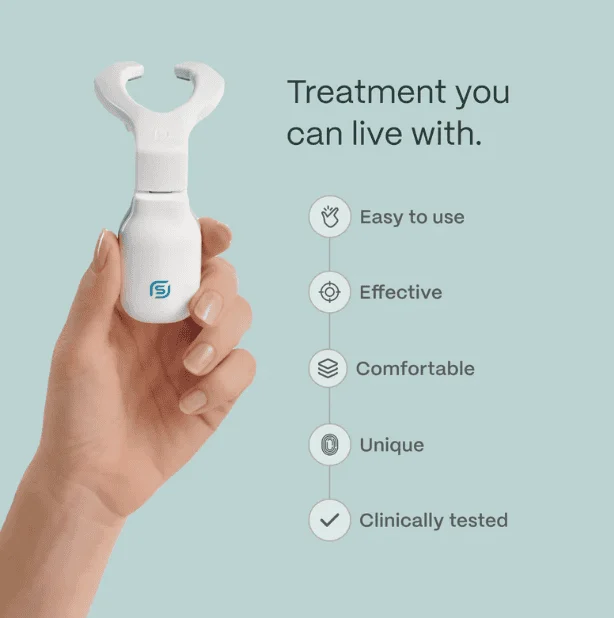- Best Cooling Sheets for Menopause - December 4, 2025
- Winning the War on Snoring: My Six-Week eXciteOSA Review - December 4, 2025
- Featherlight Post-Bath Comfort: My Miracle Antimicrobial Gauze Robe Review - December 3, 2025
If you’ve ever shared a bed with a snorer (or been told that you are the snorer) you already know the chaos of those nighttime symphonies. The gasps. The pauses. The weird choking noises that make you bolt awake at three am wondering if your partner just died. My husband snores. I snore. And sometimes our kids want to do sleepovers at their friends houses so they can escape the dueling leaf blowers going at it in surround sound.
At this point, we’ve tried it all: nasal strips, mouth tape, weird chin straps, even the “maybe if we both sleep on our slides and stop breathing at the same time” approach. Spoiler: none of that worked. So, like any mildly sleep-deprived couple with WiFi access, we dove headfirst into the world of sleep tech – and that’s where I found myself comparing options with two very different takes on the same problem: eXciteOSA and MAD mouthguards.
Disclaimer: I’m not a doctor. I’m just someone who snores, married to someone with sleep apnea, who’s spent way too many late nights researching every device that claims to fix it all. This is what I’ve learned, plus a dose of reality from our own trial-and-error. Always talk to your doctor before trying any of this.
The Short Answer
Both eXciteOSA and MAD mouthguards tackle snoring and mild sleep apnea, but in totally different ways. eXciteOSA is a daytime therapy device that retrains your muscles for long-term results. MADs, on the other hand, are tried-and-true nighttime mouthguards that physically move your jaw to open your airway and deliver instant relief (as long as you wear them). Think of it as muscle training versus mechanical fixing: both work, it just depends on which works best for you.
The Problem: Sleep Apnea (and Why it’s Ruining Everything)
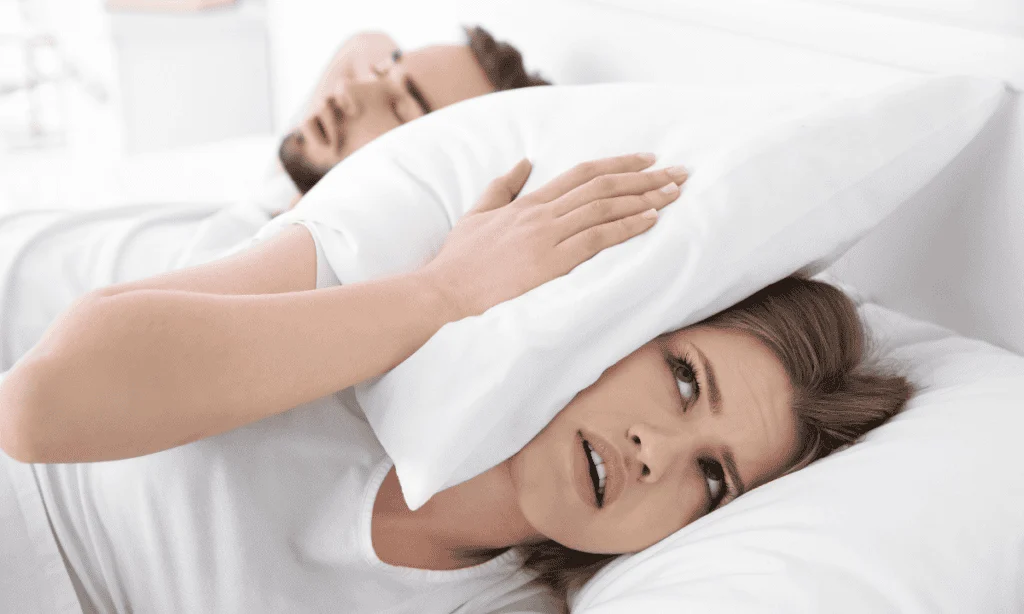
Sleep apnea, in plain English, is what happens when your airway decides to take a coffee break while you’re asleep. Your brain is trying to breathe, your body is trying to breathe, but your throat? It’s like, “nah bro, I’m good.” The soft tissue collapses, your oxygen dips, and your body freaks out, jerking you awake just enough to get that breath, and preventing you and your body from finding actual rest.
That cycle can repeat dozens, or even hundreds, of times per night. You might not remember it, but your body sure does. Morning grogginess, dry mouth, headaches, irritability, brain fog, they’re all part of the deal. Long term, untreated apnea can lead to high blood pressure, heart issues, and a general sense of feeling like garbage.
So, the big picture solution is simple: keep the airways open. The tricky part is how to do that without feeling like you’re going to war with your own face.
eXciteOSA: The Tongue Gym You Didn’t Know You Needed
Let’s start with the cool, slightly futuristic option. eXciteOSA by Spring Sleep looks like something out of a sci-fi movie but works more like a mini workout routine for your tongue.
It’s a clinically tested and FDA-cleared daytime therapy that uses mild electrical pulses to strengthen the muscles that control your tongue and airway. You pop in a small mouthpiece for 20 minutes a day while you’re awake (make sure you have a towel…there’s drooling involved). The app walks you through a short training session that sends gentle stimulation through four electrodes on the mouthpiece. The goal is to build up tongue tone so it stops collapsing backward and blocking your airway while you sleep.
Think of it as a gym membership for your tongue, minus the sweaty people and shared locker room.
The experience itself is mostly just a mild tingling, and did I mention the drool? But the tingling isn’t painful (just odd, and most people get used to it pretty quickly), and the exercise is surprisingly easy to do while scrolling social media or pretending to read work emails. Over time, the stimulation retrains your tongue muscles to hold their position better at night.
Clinical studies have shown that after six weeks of consistent daily use, users with mild apnea or primary snoring saw noticeable improvements in snoring loudness and frequency. It’s not magic, but it’s measurable, and that’s saying something in the sleep-tech world.
My favorite part is that it’s daytime use only. No wearing it to bed. No getting up at 2 am, searching across the room to figure out where your half-asleep self chucked it. You do your 20 minutes while awake, then go to sleep like a normal human being.
MAD Mouthguards: The Jaw-Nudging Classic
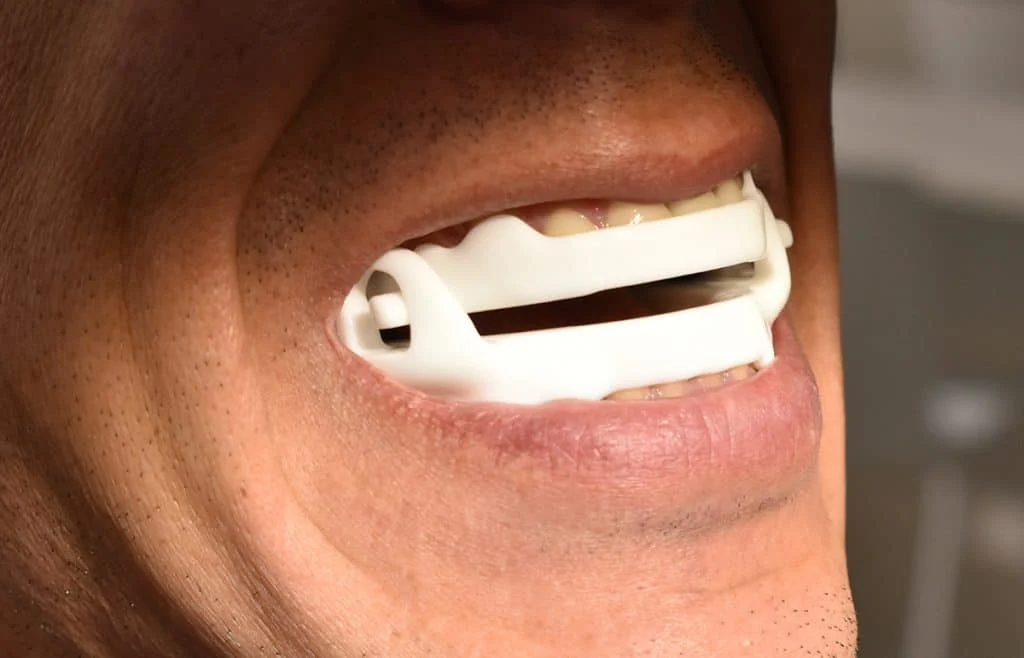
Now let’s talk about one of the OGs of sleep apnea gadgets, mandibular advancement devices, or MADs.
These have been around forever and are basically the mouthguard version of “move your jaw a little so you can breathe.” They work by gently pulling your lower jaw forward a few millimeters while you sleep, which opens up space in the back of your throat and prevents your tongue from blocking your airway.
You can get them in two flavors: the boil-and-bite ones (like SnoreRx or VitalSleep) that you mold yourself, or the custom-made versions your dentist designs specifically for your mouth (like ProSumnus or SomnoMed). The DIY models can run between $80 – $150, while dentist-made MADs can cost anywhere from $1,000 – $2,000.
And they work! Especially for mild to moderate sleep apnea or heavy snoring. They’re FDA-cleared, well-studied, and often recommended for users who can’t or won’t use a CPAP.
But let’s be honest: they’re not exactly glamorous. You have to wear it all night. Some people adapt quickly, others wake up feeling like their jaw went ten rounds with a stapler. Dry mouth, drooling, jaw soreness, and the ever-lovely “morning bite realignment” dance are common side effects. Long-term, they can even shift your teeth if not fitted properly. In short? Keep your dentist in the loop so you can catch any problems if they do start.
The Showdown: Daytime Trainer vs. Nighttime Fix
Let’s get into the real talk: how do these two stack up when it comes to actual life? Because you can read studies all day, but the real test is what happens when you’re half-asleep, your partner’s snoring sounds like a lawnmower, and you’re both one REM cycle away from adding on another bedroom to the house.
Comfort
Comfort-wise, eXciteOSA wins, hands down. You’re not wearing anything at night. You do your 20-minute session during the day and that’s it. MADs, on the other hand, are in your mouth all night. Even the best custom ones that feel more like retainers than mouthguards can take some getting used to.

Results
When it comes to results, MADs have the longer track record. They’ve been studied for decades and are proven effective for mild to moderate apnea. eXciteOSA’s studies are newer, but do show strong promise for mild apnea and snoring. It’s a difference between fixing the symptoms tonight (MAD) and retraining your muscles to prevent the problem (eXciteOSA).
Cost
And then there’s cost. eXciteOSA costs $1,650 for the full system, which includes the base, charging cable, mouthpiece, and app. No insurance coverage yet for most people, though per their website they are working on it (new tech takes time for approval), and HSA or FSA funds may help cover it. MADs vary wildly; cheap ones are under $100, prescription ones can hit $2,000, but many insurances may cover the dental-made MADs for those with official sleep apnea diagnoses.
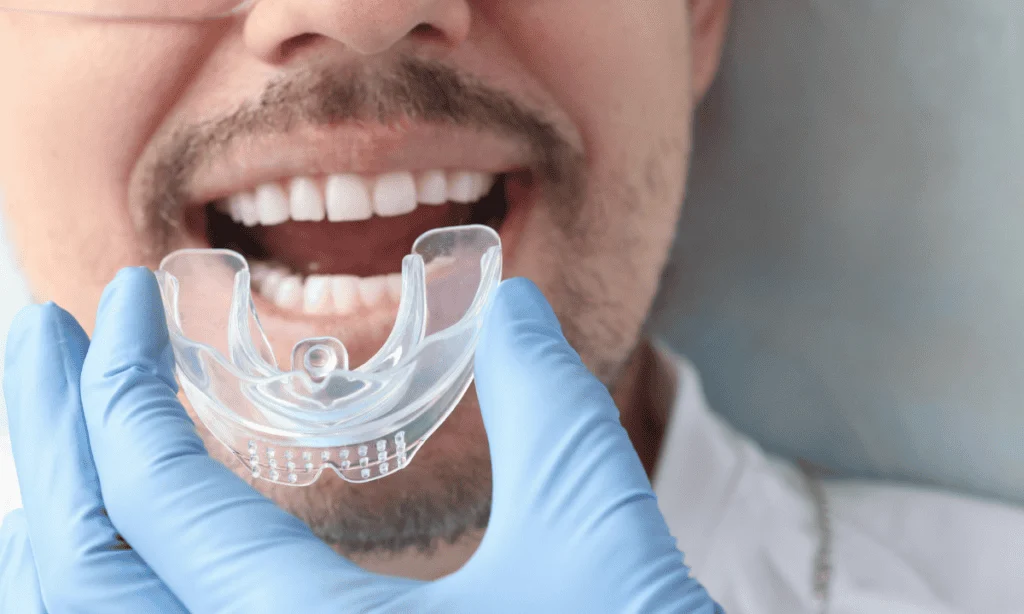
The TL;DR? If you’re looking at comfort only, eXciteOSA wins by a landslide. Clinical data? MADs have that in the bag (for now). Price? About the same, unless you’re doing an over-the-counter MAD, which is definitely the least expensive option (but also might change your bite).
When it comes down to it, it’s like choosing between doing physical therapy or wearing a brace. One will train your body to work better; the other holds it in place for as long as you use it.
The Lifestyle Factor
Here’s what doctors don’t always say: your lifestyle matters more than you think when picking a sleep apnea solution.
If you’re the type who wants your nights completely gadget-free, eXciteOSA is a dream. You do your 20 minute session during the day, your tongue gets its little workout, and you climb into bed with nothing attached, inserted, or buzzing. No extra steps, no routine to remember. Just sleep.
If you’re more of the “give me something that works right now” type, a MAD scratches that itch. You pop it in, it does its job, and you get immediate relief. The catch is that you’ll always rely on it. Forget it on your nightstand when you’re traveling, and that snoring is joining you for your vacation.
The Science Stuff (in Normal People Terms)
The core difference boils down to this: eXciteOSA changes muscle behavior. MADs change the mechanics.
Your tongue is a surprisingly lazy muscle. During sleep, it relaxes like everything else, but for people with sleep apnea, it relaxes too much and flops backward. eXciteOSA strengthens those muscles so they can hold their position naturally. Over time, that can reduce snoring and mild apnea events even when you’re not actively using the device.
A MAD, meanwhile, doesn’t care how strong your tongue is. It just physically holds your jaw forward so your airway stays open whether your muscles cooperate or not. It’s the brute-force approach, and it’s effective, but only while you wear it.
The Real Question: Which One Wins?

If you have mild apnea or your main issue is snoring, eXciteOSA is the better long-term play. It treats the root cause, not just the symptoms, and you get to sleep without anything in your mouth. It’s also discreet, travel-friendly, and works while you’re still awake.
If your apnea is moderate or if you’ve already tried every “snore fix” under the sun, MADs are still an excellent option (specifically, the prescription ones you get from your dentist, not the boil and bites). They’re proven, widely available, and can feel like you’re slipping on a retainer instead of a mouthguard if you can find the right fit. You’ll see the results instantly, you just have to be able to adjust to sleeping through the night with something in your mouth.
The real winner depends on your tolerance for patience and your willingness to stick with a routine. eXciteOSA takes consistency, MADs take commitment. Neither works if they live in a drawer.

